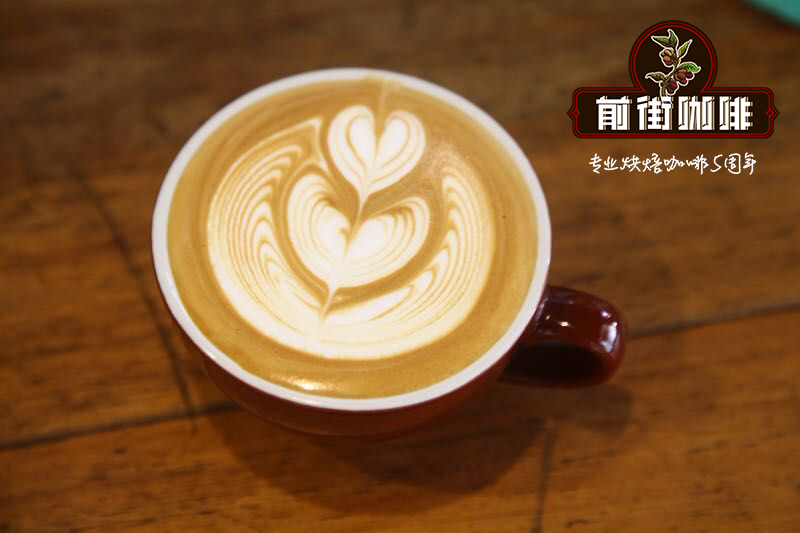Do you know how coffee is named | I will show you how coffee is named.
Professional coffee knowledge exchange more coffee bean information please follow the coffee workshop (Wechat official account cafe_style)
Coffee is a common drink in today's society, and coffee is only traded in oil all over the world. Coffee is a very common drink in foreign countries, and its own coffee culture is developing in China with the continuous development of economy. Today, boutique coffee can almost be said to be the main selling point of cafes (for those who only sell espresso, I respect you as a man). More and more cafes focus on boutique coffee and sell coffee from different countries.
So do you know what coffee beans are usually named after? The name of the boutique coffee that you can say casually, maybe you haven't studied the reason behind it. Let's learn about the naming of coffee beans.
Coffee named after the mountains:
Blue Mountain: the Blue Mountains are located in Kilimanjaro, east of Jamaica: a conical volcano in eastern and northeastern Tanzania.

Coffee named after the country:
Brazil (Brazil): Brazilian Fine Coffee Association (BSCA) Colombia (Columbia) Colombian Coffee producers Association (FNC)
Ethiopia (Ethiopia): Ethiopia Commodity Exchange (ECL)
Coffee named after the producing area:
Yirgacheffe: Yega Xuefei is a town in Sidamo province, which is independent because of its unique flavor.
Coffee named after the variety:
Geisha: for example, Geisha Columbia in Colombia, Geisha Panama in Panama
Bourbon: there are three types of bourbon, all named after varieties.
The general coffee fruit of Yellow Bourbon is red when it is ripe, but it is orange when it is ripe, which is not the common red, so it is named yellow bourbon.
After the red bourbon (Red Bourbon) coffee tree blossoms and bears fruit, the color of coffee fruit changes from green to mature dark red.
Pink bourbon (Pink Bourbon) is a mixture of red bourbon and yellow bourbon. Coffee cherries are romantic pink when ripe. This variety is very rare. Because the color of coffee fruit is determined by recessive genes in pollen grains, the color of coffee fruit is unstable.
Coffee named after the port:
Mocha: this is a coffee export port of Yirgacheffe (Santos): this is an export port of Brazil (Brazil)
Coffee named after the company:
Company 90 (Ninety Plus): this is a coffee company in the United States, such as 90 + 90+SNNP, which does not mean a cup score of 90, but refers to a top range of 13 flavors.

Coffee named after a family:
Mantenin is the phonetic error of the Mandaining mandheling people in Indonesia. During the Japanese occupation of Indonesia during World War II, a Japanese soldier drank mellow coffee in a cafe, so he asked the owner the name of the coffee. The boss mistakenly thought he was asking where you were from, so he replied, "mandheling". After the war, the Japanese soldiers recalled the "manning" they had drunk in Indonesia. As a result, 15 tons of Indonesian coffee was transported to Japan, which was very popular. That's how Manning's name came out.
Coffee named after the translator:
Cappuccino (Cappuccino): it originally means that the priest of the Catholic Cappucci Church wears a hat on a cloak, because some people say that the milk foam on the coffee is similar to the hat of a priest's cloak, others say that the color is similar to each other, and then the name of coffee is slowly formed.
Latte (Latte): in Italian, Latte means milk. If you order a cup of Latte in Italy, you will get a cup of milk; unless you order "Coffee Latte" you will get a cup of latte.

Mocha: this is a kind of espresso, a mixture of espresso, chocolate, cream and milk.
This is the various ways of naming coffee, not all of them can be cited because there are too many, and it is also necessary for you fans to explore coffee beans and find more interesting and unique stories behind coffee beans, just as we will visit the store. to run for the sake of pursuit.
END
Important Notice :
前街咖啡 FrontStreet Coffee has moved to new addredd:
FrontStreet Coffee Address: 315,Donghua East Road,GuangZhou
Tel:020 38364473
- Prev

Siphon pot | the difference between stirring and soaking when extracting coffee!
First of all, let's briefly talk about the source of the siphon pot. The siphon pot originated in Europe and originated 70 years earlier than hand-made. Between 1830 and 1840, Loeff in Berlin, Germany, first invented and patented the siphon extraction method of glass material and upper and lower pots, and later passed through France, Britain and Germany.
- Next

Notes on searching for beans on Qianjie Street | Special report on Rose Summer of Multi-Tower Goddess Manor in Costa Rica
CostaRicaDotaElDiosaGeisha Costa Rica multi-tower goddess manor rose summer origin: Costa Rica CostaRiCa production area: Tara Zhu Tarrazu manor: multi-tower goddess manor DotaEIDiosa varieties: rose summer Geisha
Related
- Being chased out of the rain in front of Starbucks?! Store: Sheltering from rain under umbrellas poses a safety hazard
- The white moonlight has changed?! Lucky launches "Big Winter Pear American"
- Hand-brewed coffee three-stage method, high-sweet and universal brewing method to share! What does the high sweet water level of hand-brewed coffee mean?
- What is the difference between raw, refined and full espresso coffee? How to extract espresso and taste good?
- A complete list of coffee bean names and their meanings! What is Yejia Shefi coffee? Where is Mantelin coffee?
- What grade does Arida Manor Kaduai coffee beans belong to? What treatment is Arida ASD slow anaerobic sun exposure?
- The milk tea cup becomes smaller?! Overlord Tea Girl launches a new "Return to Yunnan" series
- Accused of selling counterfeit and high-priced coffee beans! Well-known boutique coffee brand "Oukelao" bowed and apologized!
- How to make espresso dumplings? Can I eat coffee and glutinous rice balls together?
- Save the unformed and stagnant powder cakes in one second! What is the problem with stagnant water in the powder bowl of the espresso machine?

